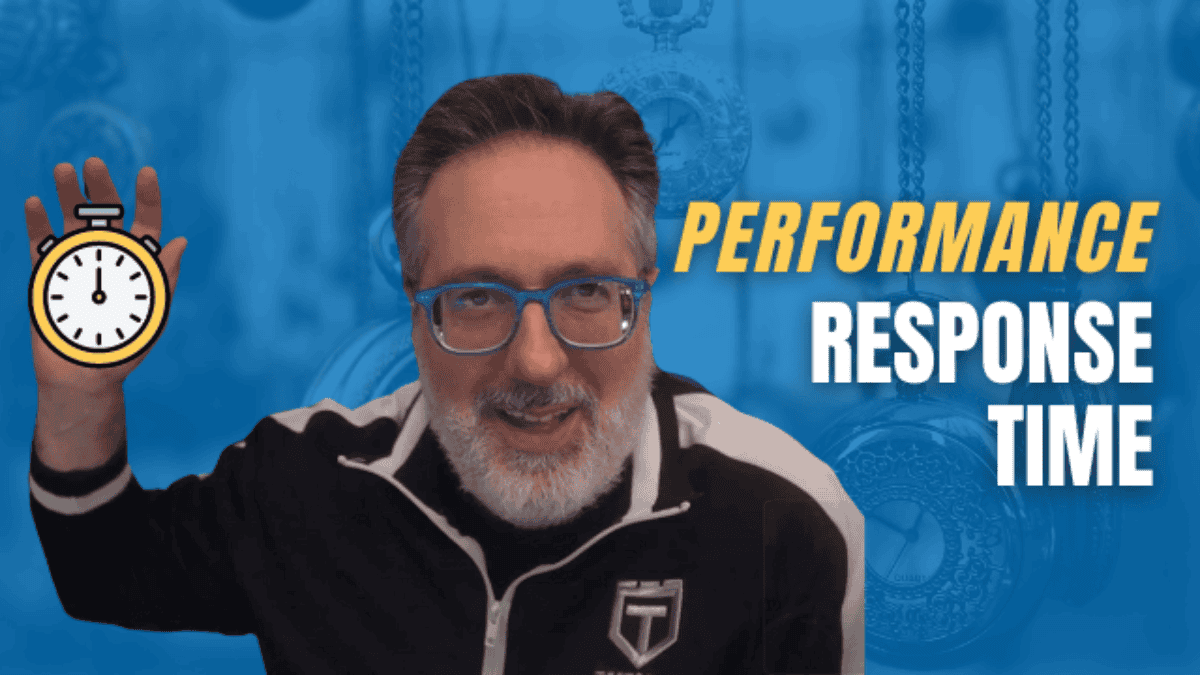Regarding e-commerce, Black Friday is the ultimate test of endurance.
It's one of those days of the year, along with Cyber Monday, when traffic spikes, sales skyrocket, and the pressure is on to deliver a seamless online shopping experience.
We all know horror stories, sites, abandoned crash carts, and customers disappearing into thin air.
The culprit is poor site performance.
And it isn't just for e-commerce.
Gearing up for Black Friday sales applies to any application that can experience traffic spikes at any time.
For example, Netflix recently faced significant streaming disruption during the Mike Tyson Jake Paul fight, which affected many users worldwide. This led to widespread user dissatisfaction, with over 88,000 complaints reported on DownDetector. Social media platforms are flooded with negative feedback, potentially tarnishing Netflix's image as a reliable streaming service, which can impact the brand and revenue.
By preparing now, you'll be able to gracefully handle high user demand, no matter when and why it hits.
What should you do to avoid this?
Here are the six critical site performance checks you need to run to show that your site is ready to handle any events, such as the Black Friday and Cyber Monday rush.

Step one: Start Preparing Early
Companies like eBay and Walmart know that preparing for peak days starts well ahead of time. Early load assessments help them understand how much traffic their system can handle and identify weak points.
For example, I've talked to many experts who tell me that conducting these load tests months in advance helped many companies boost performance by up to 50% before holiday traffic hits.
Also many expert on my DevOps (Previously Performance Podcast) say it may seem obvious but its always better to start any testing process earlier rather than latter.
For example in one of my podcast episodes, Lukasz Nowanski emphasized the importance of involving testers in performance testing from the very beginning of the application development process. He pointed out that performance considerations should be part of the architectural discussions right from the drawing board.
This proactive approach ensures that performance testing isn't just an afterthought but a fundamental part of the development lifecycle
Even if you're a smaller business, starting early will let you catch performance bottlenecks before they impact your customers, which will be proof that this actually works.
Here is a testimonial I found from the company Digital River, where they said they had a record-breaking holiday season using a tool like Radview WebLoad. They prepared all year, examined their SAS platform's performance, and focused on iterating load testing with development groups to maximize their system performance. And when Thanksgiving came, it was happily uneventful. Even with the site as large as the Microsoft store
Step Two: Run real load tests that simulate actual user behavior.
Effective load testing is more than just throwing a high volume of virtual users at a site to see if it holds up. It's about replicating the interactions real users will have on your platform. This is where I often see newcomers getting into trouble. They acquire a tool and unleash an unrealistic, massive load without considering genuine usage patterns.
This approach must account for how users interact with different parts of the site, how many true transactions per second occur, or how usage varies over time.
Instead, think of load testing as a way to understand your system's behavior under actual conditions.
For example, some users browse multiple pages before purchasing, while others log in, check order status, and leave. These varied, authentic interactions reveal how well a system can perform under true load.
A test that reflects real user behavior will help you pinpoint actual vulnerabilities rather than manufacturing crises by piling on traffic in ways that wouldn't happen in the real world.
Avoiding Unrealistic Load and Its Consequences
When tests aren't realistic, it can lead to unnecessary site crashes and internal panic. Imagine simulating 10,000 users, all performing the same task simultaneously — it's not representative of actual site usage. It can create “false positives” where the site appears unprepared when, in reality, it would handle regular traffic patterns just fine. Realistic load testing is about balance and precision, helping you understand where your system genuinely needs reinforcement and which issues are outliers caused by testing extremes.
For most applications I've worked on, I've only been able to obtain this type of realistic user scenario features from Enterprise Performance Testing tools—not open source.
Third is optimizing the front-end experience, especially for mobile users.
Did you know that nearly 70% of holiday shopping is done on mobile? That statistic alone underlines why front-end optimization is absolutely critical.
Milliseconds of delay can mean the difference between a sale and an abandoned cart, especially in high-traffic scenarios like holiday shopping.
A faster, smoother user experience isn't just a nice-to-have — it's essential for maximizing conversions and retaining customers.
To optimize for speed for front-end performance testing, start with the basics: compressing images, caching assets, and preloading resources.
In another podcast interview, Andy Davies shared fascinating data on how improving site speed can significantly boost revenue.
He worked with a retailer to enhance the mobile experience for Android users, which resulted in a 26% increase in revenue by reducing the load time by 4 seconds. This highlights the financial impact of optimizing mobile performance
These “quick wins” can significantly reduce load times without needing significant code changes.
For example, compressing images can cut page load times by several seconds, while caching allows frequently accessed elements to load instantly, improving the overall experience. Preloading resources—like fonts or above-the-fold images—ensures that critical elements appear instantly, creating a more seamless experience for users.
Some advanced load testing tools now offer front-end monitoring options, which are invaluable for maintaining performance across mobile devices. These tools allow you to track a ton of real-time metrics.
With these insights, you can pinpoint areas where delays or bottlenecks occur and address them proactively, ensuring your site remains snappy and responsive across all devices.
Why This Matters: With mobile traffic often surpassing desktop, an optimized front-end can substantially impact engagement and revenue. By investing in front-end performance, you're enhancing user experience and future-proofing your site against potential slowdowns, especially during peak traffic and user expectations. In short, front-end optimization is a powerful lever for both performance and profitability.

Number four is preparing for the unexpected with a contingency plan.
Holiday traffic brings surprises, and a solid fallback strategy can be a game changer.
Think about what would happen if a key component of your site slowed down or went offline. Quick rollbacks, backup servers, or any feel-over mechanism can help keep users from experiencing downtime even if you don't have extensive resources.
Setting up automatic alerts for critical systems can be a lifesaver.
Also Michael Sage on a podcast shared some fascinating perspectives on chaos engineering, which is crucial to having a robust contingency plan.
He emphasizes the importance of simulating real-world disasters to test your systems' resilience.
By mimicking scenarios like shutting down all traffic to an AWS region, you can trigger failover plans and ensure your systems can handle unexpected disruptions..

Number five: Monitoring real-time interactions to catch issues quickly.
Real-time monitoring allows you to see exactly what users are doing on your site as it happens.
So imagine noticing a slowdown on a specific page and resolving it immediately before a customer drops off. You can use free options like Google Analytics or server logs to understand what users might encounter.
Performance expert Scott Moore also highlights the importance of end-user monitoring as part of the digital experience. He points out that it can help isolate performance problems and even automatically fix them before customers are aware there's an issue
However, I found that using a tool like WebLoad is the way to go for enterprise-wide testing. It gives you really detailed analytics that makes things actual and that you can act on right away. And number six is review and refine with a postmortem. So when the season wraps up, make sure to take time to review what worked in my part and what did it. This doesn't apply just to Black Friday.
Postmortem reviews are a great way to improve and continuously identify areas for improvement. Look at where traffic was highest and refine your strategy.
Once again, you can use a simple spreadsheet with performance metrics to help you identify trends over time.
What Performance Tools Should You Use?
But as I mentioned, I highly recommend using an enterprise two like Web Load, which offers an extensive number of reporting features to help you pinpoint these issues quicker than using spreadsheets. With these steps, you'll be better prepared for Black Friday and the entire holiday season.
Look, I understand there are many great tools that can help, but I know how overwhelming it could be to choose one and get started.
So why not try a free 30-day trial of Web Load for Test Guild members only? As a bonus, I have a special 10% discount you can use for it, too, clicking on the button down below.





